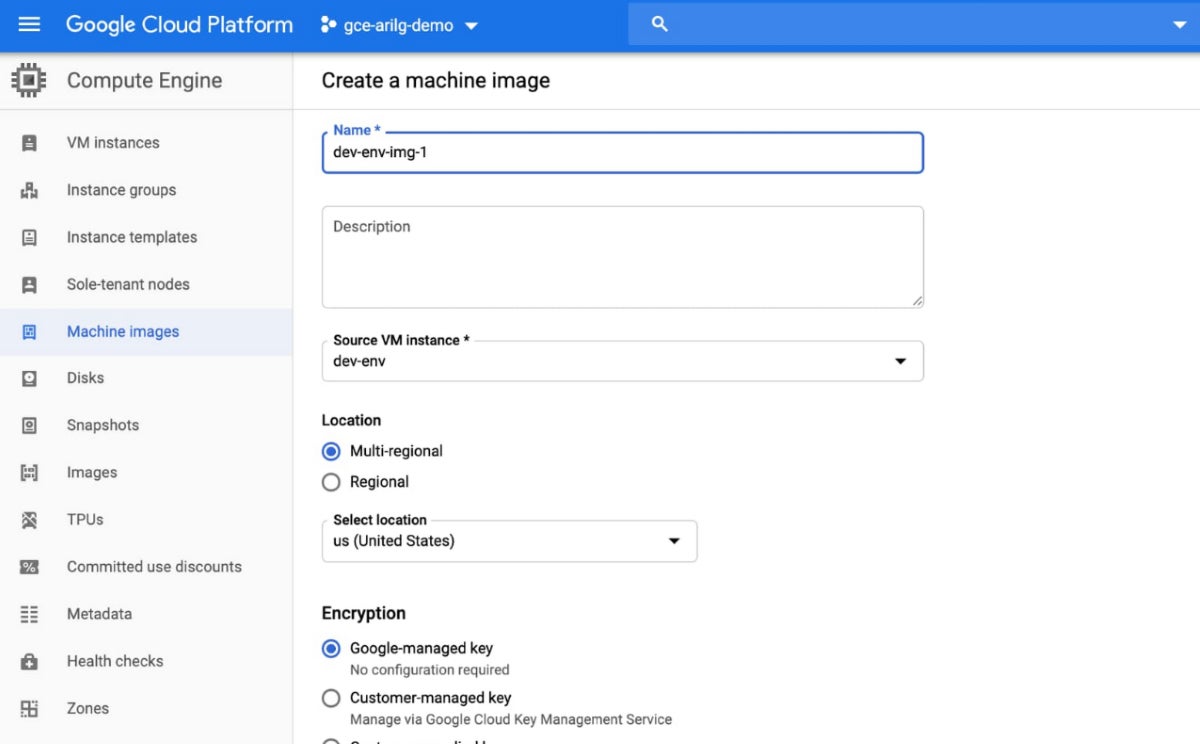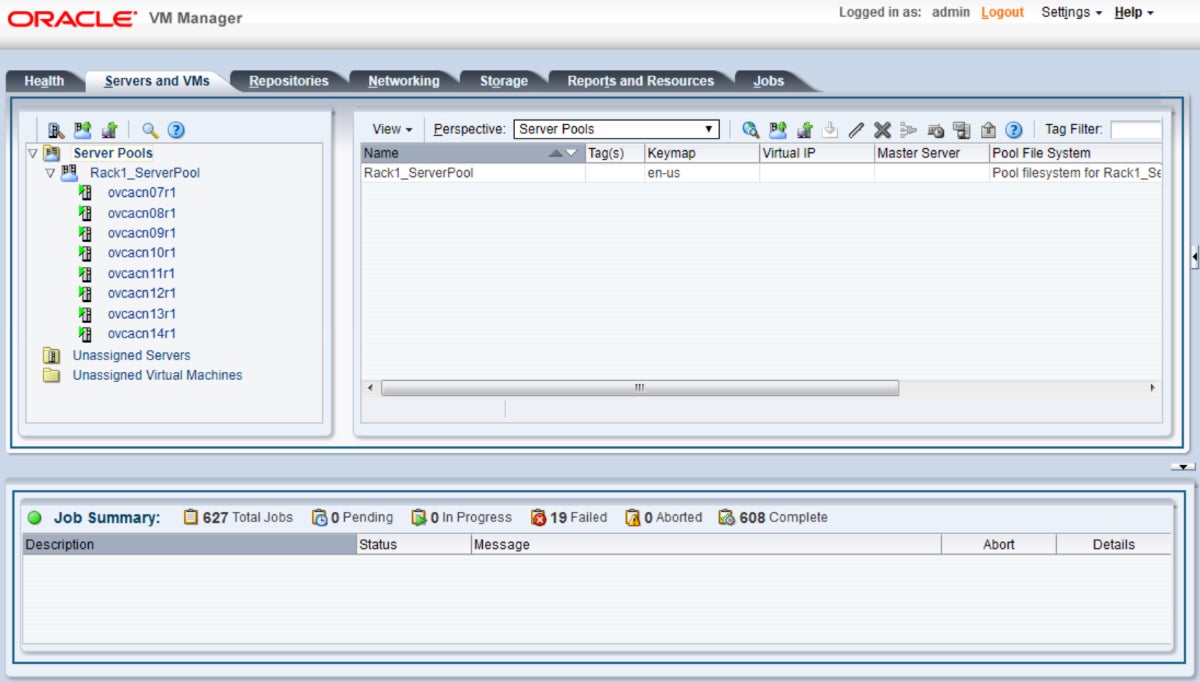With VMware’s Partner Connect program set to conclude by April 30, 2024, managed service providers (MSPs) are at a pivotal juncture. The need to transition to alternative desktop virtualization solutions is critical to avoid disrupting the virtualization services you deliver to your clients and ensure they remain satisfied.
On the bright side, this shift offers an opportunity for MSPs to explore innovative platforms that offer not only comparable virtualization capabilities but also potentially superior features, cost efficiencies, and partner benefits.
Here are our top picks for VMware alternatives, each distinguished by unique strengths that cater to varied MSP needs:
- Google Compute Engine: Best overall for a mix of core features and automation.
- Azure Virtual Machines: Best for deep integration with Microsoft’s ecosystem.
- Red Hat Enterprise Linux: Best for a mix of intuitiveness and automation.
- Oracle VM: Best for pricing.
- Digital Ocean: Best for simplicity and developer-friendly cloud services.
Featured Partners
Top VMware alternatives comparison
As MSPs turn their gaze from VMware, they need to understand how these alternatives compare with each other. Critical features to consider include deployment and provisioning, resource management, automation capabilities, and pricing structures.
This comparison aims to highlight the distinct advantages and potential limitations of each platform, providing MSPs with a clear perspective on which solutions best align with their service offerings and client needs.
| Product | Virtual machine management | Networking capabilities | Storage management | Security features | Backup and recovery | Starting pricing |
|---|---|---|---|---|---|---|
| Google Compute Engine | Yes | Yes | Yes | Yes | Yes | See calculator or contact for quote |
| Azure Virtual Machines | Yes | Yes | Yes | Yes | Yes | See calculator or contact for quote |
| Red Hat Enterprise Linux | Yes | Yes | Yes | Yes | Limited | $179/yr. |
| Oracle VM | Yes | Yes | Limited | Yes | Limited | Free |
| Digital Ocean | Limited | Limited | Yes | Limited | Limited | $4/mo. |

Google Compute Engine
Best overall for a mix of core features, automation, and scalable cloud infrastructure.
Overall rating: 4.5/5
- Cost: 4.5/5
- Core Features: 5/5
- Customer Support: 3.5/5
- Ease of Use: 4/5
- Management and Automation: 5/5
- Compatibility: 5/5
Google Compute Engine offers an extensive infrastructure that extends beyond traditional virtualization capabilities, which gives MSPs scalable and secure compute resources.
Unlike VMware, which focuses on server virtualization, Google Compute Engine enables MSPs to leverage the power of Google’s global infrastructure. This comes with high-performance, scalable virtual machines (VMs) with the benefits of Google’s advanced data analytics and machine learning capabilities for your MSP’s clients.
Google Compute Engine is a good choice if your customers will need not just virtualization but also integration with cloud-native services.

Pros and cons
| Pros | Cons |
|---|---|
| Highly scalable and reliable infrastructure. | Potential steep learning curve for those unfamiliar with Google Cloud. |
| Deep integration with Google Cloud services. | Pricing can be complex to understand due to numerous options. |
| Extensive global network for improved performance. | Customer support has room for improvement. |
Pricing
Google Compute Engine follows a pay-as-you-go pricing model and offers cost efficiency through sustained use discounts and custom machine types to fit specific workload needs.
New customers get $300 worth of free credits to spend on Google Cloud, but you’ll have to contact Google sales for specific pricing information — or you can determine an estimate using the Google Cloud Pricing Calculator.
Features
- Scalable VMs enable MSPs to scale client resources on demand.
- Seamless integration with Google Cloud services gives MSPs a comprehensive suite of tools for enhancing client infrastructure.
- Custom machine types for tailored performance to optimize configurations based on specific client needs.
- Sustained use discounts for cost efficiency help MSPs to manage customer costs effectively and maximize value.

Azure Virtual Machines
Best for deep integration with Microsoft’s ecosystem.
Overall rating: 4.5/5
- Cost: 4.5/5
- Core Features: 5/5
- Customer Support: 4.25/5
- Ease of Use: 3.5/5
- Management and Automation: 4.5/5
- Compatibility: 5/5
Azure Virtual Machines provides a seamless extension of Microsoft’s ecosystem, presenting a familiar environment for customers already using Microsoft products. Azure’s integration goes beyond VMware’s by offering native compatibility with Microsoft 365, Dynamics, and other Azure services. This helps it become a cohesive cloud experience.
The integration is particularly beneficial for MSPs managing clients with a strong reliance on Microsoft products.
Additionally, Azure’s global presence ensures that your clients’ applications are supported by a robust and reliable infrastructure, capable of scaling to meet any demand.

Pros and cons
| Pros | Cons |
|---|---|
| Extensive integration with Microsoft products. | The wide array of options can be overwhelming. |
| Flexible pricing options. | Integration with non-Microsoft products may require extra configuration. |
| High compatibility and availability. | Customer service quality has room for improvement. |
Pricing
Azure Virtual Machines offers a flexible pricing model, including pay-as-you-go, reserved instances, and spot pricing, allowing your clients to optimize costs based on their usage patterns — plus an industry-leading one year free trial. Microsoft offers a VM pricing calculator on their website for prospective clients to estimate their costs.
Features
- Supports a wide range of VM sizes and types, including GPU and high-performance compute options.
- Advanced security management and threat protection to secure client environments in the Microsoft ecosystem.
- Seamless integration with Microsoft 365, Dynamics, and other Microsoft products.
- Rapid backup and restore to ensure client data is secure and recoverable.

Red Hat Enterprise Linux (RHEL)
Best tool for a mix of intuitiveness and automation.
Overall rating: 4/5
- Cost: 3.75/5
- Core Features: 3.75/5
- Customer Support: 4/5
- Ease of Use: 4.5/5
- Management and Automation: 5/5
- Compatibility: 4.5/5
Red Hat Enterprise Linux (RHEL) stands out for its open-source foundation, offering a level of customization and flexibility that traditional VMware environments may lack.
If your clients need enterprise-grade reliability and compliance, you cannot ignore RHEL as it’s renowned for its stability and extensive support. You can leverage RHEL to provide clients with an easy-to-use, secure, stable, and highly customizable operating system environment, optimized for both physical and virtual infrastructures.

Pros and cons
| Pros | Cons |
|---|---|
| Industry-leading stability and security. | Subscription model may be a cost barrier for smaller clients. |
| Extensive enterprise support | The platform may require specialized knowledge to use effectively. |
| Wide compatibility with enterprise environments. | Limited 3rd party application support. |
Pricing
RHEL operates on a subscription model, providing your clients with not just the OS but also a suite of tools, resources, and support to ensure their infrastructure’s reliability and security. Its prices start as low as $179 per year for a single workstation to upwards of $2,499 per year for a virtualized data center.
Features
- Advanced security features for client data protection using an industry-leading security framework.
- Supports containerized applications, allowing MSPs to offer modern application deployment options.
- Extensive ecosystem of certified applications and hardware.
- Automation capabilities with Ansible integration.

Oracle VM
Best for pricing.
Overall rating: 3.75/5
- Cost: 5/5
- Core Features: 3.5/5
- Customer Support: 3.25/5
- Ease of Use: 3.5/5
- Management and Automation: 2.5/5
- Compatibility: 4/5
Oracle VM is specifically optimized for Oracle applications and databases. It provides performance and management features that are uniquely tailored to Oracle environments. This specialization provides MSPs with a competitive edge when managing customers that rely heavily on Oracle products. This helps to ensure optimal performance and compatibility.
Unlike VMware, which is more generalized, Oracle VM allows MSPs to deliver highly optimized and integrated solutions within Oracle ecosystems. Your clients can achieve lower operational costs and improved efficiency, particularly in Oracle-centric environments.

Pros and cons
| Pros | Cons |
|---|---|
| Clear and transparent pricing and a free tier. | Primarily suited for organizations heavily using Oracle products. |
| Optimized for Oracle databases and applications. | May present a learning curve. |
| Strong support and integration with Oracle’s ecosystem. | Limited automation compared to some alternatives. |
Pricing
Oracle VM is offered as part of Oracle’s broader product ecosystem. The provider offers compute pricing details transparently and straightforwardly for different kinds of instances. Visit their website for more specific information, including a cost estimator, or to reach out to their sales team. Best of all, they offer a free tier — plus $300 cloud credit — for small-capacity workloads.
Features
- High performance and optimization for Oracle databases and applications.
- Template builder to simplify VM deployments and allow MSPs to quickly provision pre-configured Oracle environments for their subscribers.
- VM cloning brings speed and consistency to rapidly scale the environments of your users.
- Dynamic resource management automatically adjusts resources and ensures optimal performance across client workloads.

Digital Ocean
Best for simplicity and developer-friendly cloud services.
Overall rating: 3.5/5
- Cost: 4.5/5
- Core Features: 3/5
- Customer Support: 3.25/5
- Ease of Use: 4.5/5
- Management and Automation: 2.5/5
- Compatibility: 4.5/5
Digital Ocean is renowned for its simplicity and ease of use, making it a perfect match for MSPs serving startups and developers. It takes a straightforward approach to cloud hosting, with an emphasis on developer-friendly features, allowing your clients to deploy and manage applications with minimal overhead on your part.
Digital Ocean’s transparent pricing and robust community support further enhance its appeal for small to medium-sized projects.

Pros and cons
| Pros | Cons |
|---|---|
| User-friendly interface and simple setup process. | Lacks some advanced features required for larger enterprise deployments. |
| Transparent, predictable pricing model. | Limited geographical reach compared to larger cloud providers. |
| Strong community and documentation support. | Customer support could be better. |
Pricing
Digital Ocean’s pricing model is known for its clarity and affordability, offering a range of plans that cater to many use cases, from simple “droplets” (VMs) starting at $4 per month to more complex managed services such as databases for $15 per month.
Features
- Droplets give scalable and straightforward VMs for varied client projects.
- A rich marketplace of pre-configured apps accelerates deployment of your customers’ solutions.
- Offers scalable object storage which makes it easy for users to store and serve large amounts of data.
- A collection of developer-focused tools and services.
Key features of virtualization software
When evaluating virtualization software to replace VMware, certain features stand out as particularly critical for ensuring efficient, secure, and scalable IT environments. These features include virtual machine management, networking capabilities, storage management, security, and backup and recovery.
Virtual machine management
Effective VM management is the cornerstone of any virtualization platform. This enables MSPs to easily deploy, monitor, and manage client VMs. The capabilities to expect under this feature include VM provisioning, cloning, and snapshot management — all crucial for maintaining flexible and responsive user environments.
Networking capabilities
Networking capabilities within virtualization platforms enable MSPs to configure complex network settings for their customers, including virtual switches, routers, and firewalls. This yields secure and efficient communication between VMs and the external network, supporting a range of client applications from web services to internal databases.
Storage management
Storage management allows MSPs to optimize and manage storage resources allocated to VMs, including disk provisioning, storage pools, and data deduplication. They can resultantly ensure that client data is stored efficiently, securely, and readily accessible when needed, which plays a crucial part in maintaining overall system performance and reliability.
Security features
Security features within virtualization software are critical for protecting client data and applications. This encompasses a range of functionalities, from VM isolation and secure boot processes to advanced encryption and compliance tools, thus helping MSPs safeguard their clients’ virtual environments against threats.
Backup and recovery
Robust backup and recovery options are essential for any virtualization solution as they give MSPs and their subscribers peace of mind that data and systems can be quickly restored in the event of a failure or data loss. Features like automated backups, point-in-time snapshots, and disaster recovery plans are key to ensuring business continuity.
How to choose the best virtualization software for your MSP
When navigating the myriad of available virtualization software to offer, your first consideration must be the needs and operational contexts of your current clients.
Is the virtualization software compatible with their existing systems? Is it scalable enough to accommodate growth? Does it offer competent security features to protect sensitive data? What’s the level of support provided by the vendor? These are some of the questions to ask yourself.
Additionally, evaluate the software’s ability to integrate with other tools and services your clients use. Prioritizing these aspects will guide MSPs in making informed decisions that align with their clients’ strategic goals.
How we evaluated VMware alternatives
The core features always play a huge part in the identity of a software tool. As a result, we gave those features the highest weight. That was followed by cost, since the tools should be straightforwardly and transparently priced. Otherwise, it’s easy to confuse prospective clients with convoluted pricing models. Management and automation, customer support, and compatibility come next in our rankings, with a three-way tie, followed finally by ease of use.
- Core features (25%): We assessed features critical to virtualization, such as VM management, networking, storage capabilities, security, and backup and recovery.
- Criterion winner: Google Compute Engine
- Cost (20%): Our assessment was based on the pricing models, transparency, and potential for additional costs.
- Criterion winner: Oracle VM
- Customer support (15%): We considered the availability and quality of vendor support via live chat, phone, email, and more.
- Criterion winner: Azure Virtual Machines
- Management and automation (15%): We examined the tools and features available for simplifying and automating routine tasks like user and role management, deployment, and resource management.
- Criterion winners: Google Compute Engine and Red Hat Enterprise Linux
- Compatibility (15%): Here we reviewed integration with existing client systems and applications, OS and hardware compatibility, and API availability.
- Criterion winners: Google Compute Engine and Azure VMs
- Ease of use (10%): We compared the tools based on verified user reviews to determine overall user experience.
- Criterion winner: Digital Ocean
Frequently asked questions (FAQs)
Who is VMware’s biggest competitor?
VMware’s competitive landscape includes a variety of key players, most notably competitors like Microsoft with Azure Virtual Machines, offering deep integration with the Microsoft ecosystem; and Google Cloud’s Compute Engine, known for its scalable infrastructure.
Other significant competitors are open-source platforms like Red Hat Virtualization and Oracle VM, which provide flexibility and optimization for specific enterprise needs.
Do companies still use VMware?
Yes, VMware continues to be widely used by companies around the world, thanks to its comprehensive suite of virtualization and cloud management solutions. Despite the emergence of various alternatives, VMware’s established presence, extensive feature set, and strong ecosystem support ensure its ongoing relevance in enterprise IT environments.
Who bought VMware in 2023?
In 2023, Broadcom Inc. completed the acquisition of VMware, marking a significant milestone in the tech industry. This acquisition, valued at approximately $69 billion, brings VMware into Broadcom’s portfolio, expanding Broadcom’s reach in the cloud computing and virtualization sectors. It was also Broadcom’s decision to shutter VMware’s Partner Connect program and focus more on direct business with enterprise clients.
Bottom line: Offering VMware alternatives to your SMB clients
As MSPs consider virtualization solutions post-VMware’s Partner Connect program, the alternatives presented offer a diverse range of capabilities for different kinds of clients and their needs.
From the scalability and compatibility of Google Compute Engine and Azure Virtual Machines to the open-source flexibility of Red Hat and Oracle solutions and the developer-friendly environment of Digital Ocean, you’re well-equipped to deliver customized, efficient virtualization services to your clients.
Here’s how one top MSP approached the end of VMware Partner Connect with their clients. The cloud is just the beginning: here’s why your MSP should be offering hybrid cloud and multi-cloud services, too.



